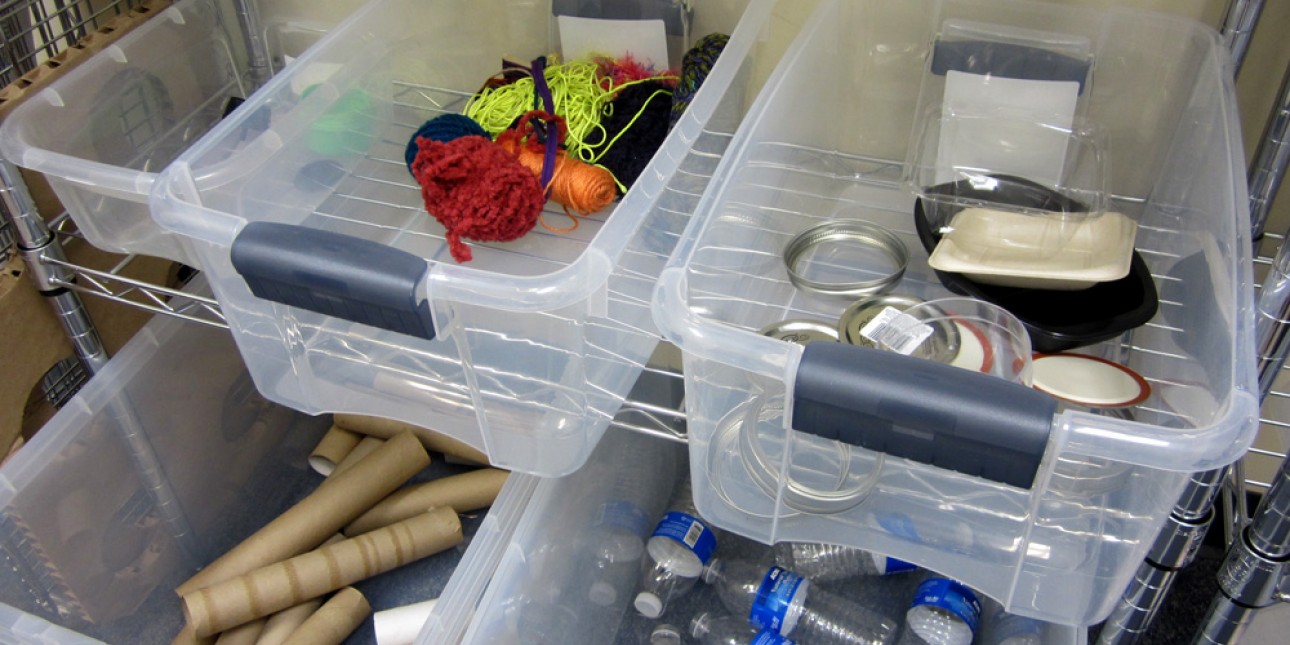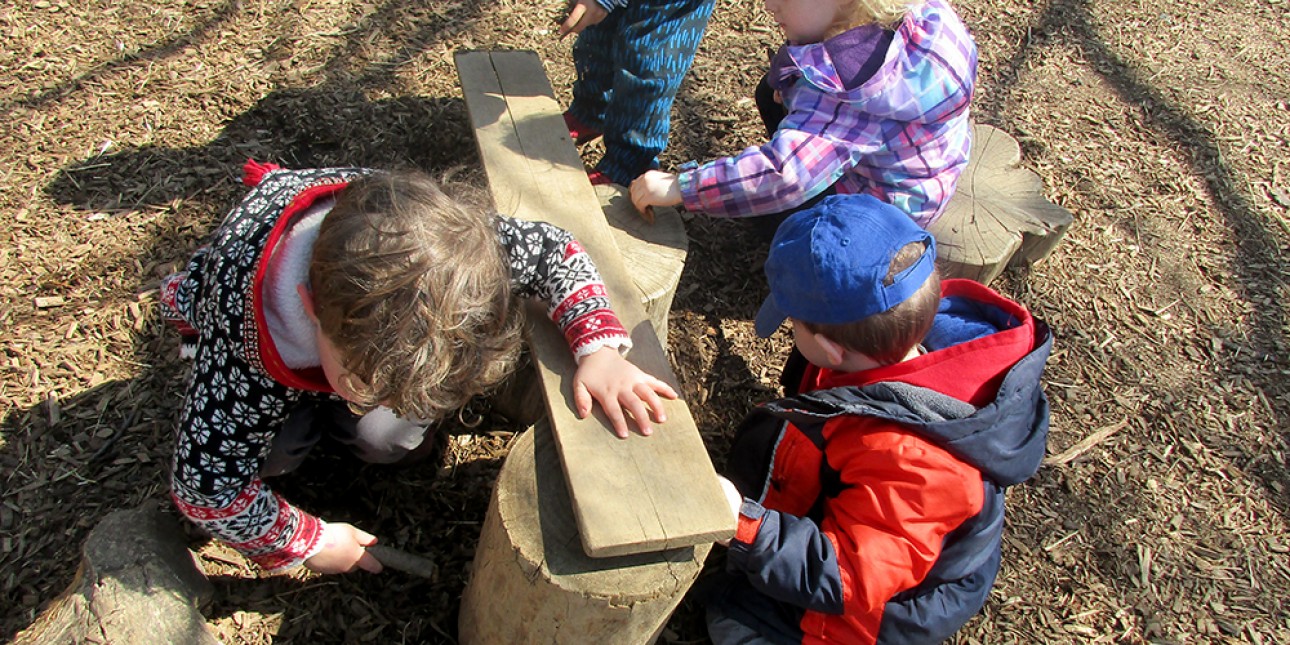November Message from Deb Green

Loose Parts Spark Imaginations
I vividly remember playing in the “forest” behind the home of my aunt and uncle as a child. I would collect sticks with my friends and create “firepits.” We would add rocks for “food” and sit on piles of leaves. Chestnuts became fairies and the local outside cats became ferocious tigers!
It is with such fond memories that I observe (and interact with) our children as they play on our nature playground and want to enrich their learning in the classroom.
Recently I have seen:
- children build a “bird’s nest” with sticks and hay. When asked about the birds, I learned that, “They are Philadelphia parrots. They are flying south soon.”
- two 3-year-olds “cooking” in the Mud Kitchen who told me they were making, “meatballs that go on the ‘sgetti and they are even better than my Nana makes.”
- children who told me they liked the new ‘dinosaur eggs.’ They asked, “Can you get us some more so we can watch them all hatch?” The larger rocks I had brought to PIC for children to turn over while hunting for bugs had all been collected in the dirt digging area. Young imaginations had taken them in a much different direction!
Such play is based on The Theory of Loose Parts, first proposed back in the 1970s by architect Simon Nicholson. Nicholson believed that the loose parts in our environment empower our creativity.
We designed our Magic Circle Nature Playground with this in mind. There, children can choose to explore and create with sticks, logs, stones, sand, buckets, dirt, mulch, pine cones, leaves, blocks, rope, and fabric. They create scenarios with these items (and many more) that we as adults would never imagine.
When we took a look indoors, we saw a need to add more loose parts to our classroom environments. Although we may purchase the most up-to-date toys and activities, it is still the cardboard box that provides hours of entertainment. I am sure you know what I am talking about!
There are many reasons to be excited about loose parts because they:
- encourage creativity, imagination, and open ended learning.
- can be used anyway children choose.
- develop more skill and competence than most modern plastic toys.
- encourage specific skills such as sorting, classifying, measuring and labeling.
- help children understand the re-use of materials.
Recently, we have turned our old copy room on the second floor of the Spruce Building into PIC’s Recycleteria, a place where teachers and children will find loose parts for their classrooms.
We invite you to join us as we build a great collection of materials, such as:
- Nuts, bolts, and washers in all sizes
- Small cardboard boxes and lids
- Cardboard scraps and toilet paper/paper towel rolls
- Wrapping paper and packing material
- Envelopes
- Mailing and poster tubes
- Ribbon and ribbon spindles
- Spools, corks, buttons, and wooden clothespins
- Fabric, yarn, and lace
- Old CD/DVDs
- Aluminum foil, foil trays, cupcake liners, coffee filters
- Yogurt containers and other small plastic containers with lids
- Plastic bottles and caps
- Glass bottles and jars
- Paint chip, wallpaper, flooring, and carpet samples
- Wooden rulers and wood scraps
- Pine cones, acorns, and interesting stones of all sizes.
We are also collecting small wooden bowls, wicker baskets, and wooden picture frames, all sizes of galvanized buckets and all sizes of wooden and metal scoops and measuring tools.
If you would like to contribute, please bring items in a bag to any administrative office (meet our administrators). We thank you in advance for washing all containers thoroughly.
Finally, why not create a loose parts area at home? Not only is this type of play great fun for children, but it helps develop healthy, strong, and complete neurological connections in young brains. And it will save a bundle of money!
